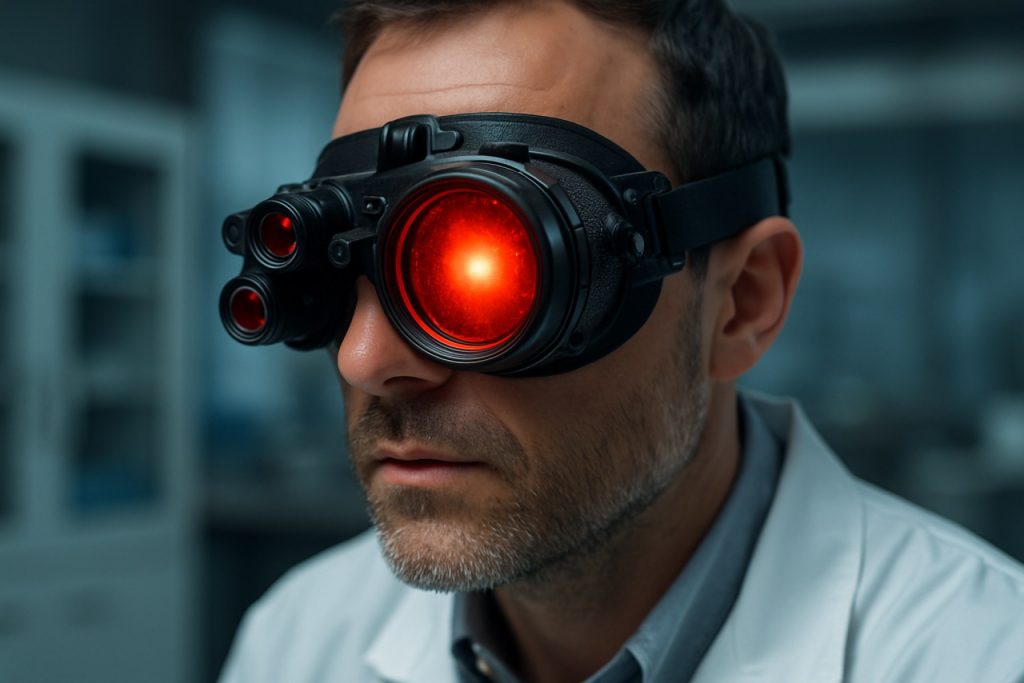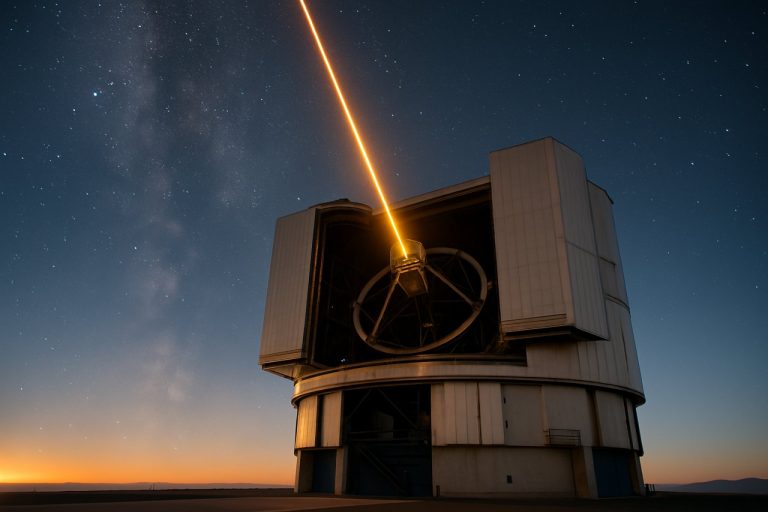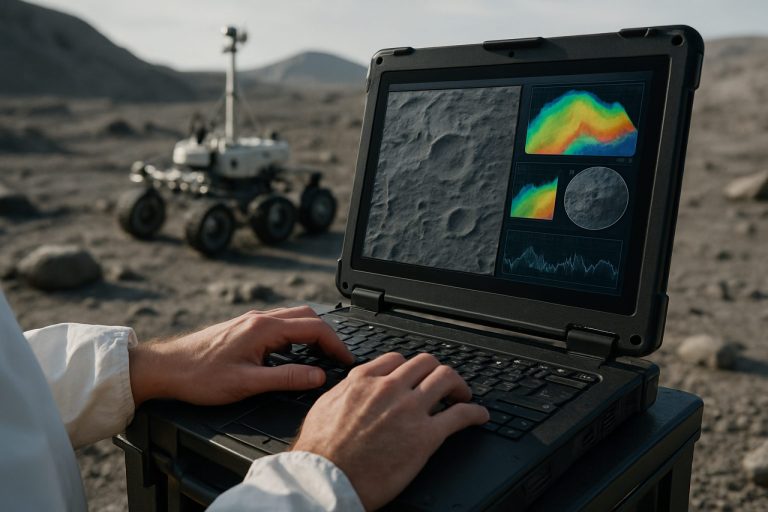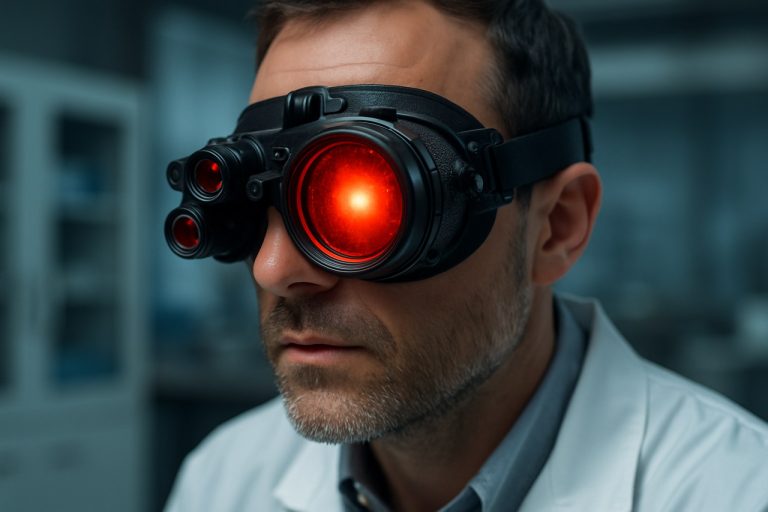
Revolutionizing Vision: How Advanced Nanotechnology is Powering the Next Generation of Infrared Devices in 2025 and Beyond. Explore Market Growth, Disruptive Technologies, and Strategic Opportunities.
- Executive Summary: 2025 Market Landscape & Key Drivers
- Nanotechnology Innovations Transforming Infrared Vision
- Current Market Size, Segmentation, and 2025 Forecasts
- Key Players & Strategic Partnerships (e.g., flir.com, teledyne.com, ieee.org)
- Emerging Applications: Defense, Healthcare, Automotive, and Consumer Electronics
- Competitive Analysis: Technology Differentiators & Barriers to Entry
- Regulatory Environment & Industry Standards (e.g., ieee.org, asme.org)
- Market Growth Projections: CAGR 2025–2030 and Regional Hotspots
- Investment Trends, M&A Activity, and Funding Landscape
- Future Outlook: Disruptive Trends, Challenges, and Opportunities Through 2030
- Sources & References
Executive Summary: 2025 Market Landscape & Key Drivers
The market for advanced nanotechnology and infrared (IR) vision devices is poised for significant growth in 2025, driven by rapid innovation, expanding defense and security applications, and increasing integration into industrial and consumer sectors. Nanotechnology is enabling the miniaturization and enhanced sensitivity of IR sensors, while new materials such as graphene and quantum dots are improving device performance and reducing costs. These advances are reshaping the competitive landscape and accelerating adoption across multiple industries.
Key industry players are investing heavily in research and development to capitalize on these trends. Teledyne FLIR, a global leader in thermal imaging and IR sensing, continues to expand its portfolio with nanomaterial-enhanced sensors, targeting both military and commercial markets. Leonardo S.p.A. is advancing IR vision systems for aerospace and defense, leveraging nanostructured coatings to improve detection capabilities in challenging environments. L3Harris Technologies is integrating nanotechnology into its next-generation night vision and targeting systems, aiming for lighter, more energy-efficient devices.
The automotive sector is also a major driver, with companies like Robert Bosch GmbH and Continental AG developing nanotech-enabled IR sensors for advanced driver-assistance systems (ADAS) and autonomous vehicles. These sensors enhance object detection in low-visibility conditions, contributing to vehicle safety and regulatory compliance. In parallel, Hanwha Corporation and Raytheon Technologies are pushing the boundaries of IR imaging for border security, surveillance, and critical infrastructure protection.
On the materials front, companies such as Oxford Instruments are commercializing nanofabrication tools that enable the production of advanced IR detectors with higher resolution and lower power consumption. The adoption of two-dimensional materials and engineered nanostructures is expected to further boost device sensitivity and spectral range, opening new opportunities in medical diagnostics, environmental monitoring, and industrial automation.
Looking ahead, the convergence of nanotechnology and IR vision is set to accelerate through 2025 and beyond, with market growth underpinned by defense modernization programs, smart city initiatives, and the proliferation of IoT devices. As manufacturing processes mature and costs decline, broader adoption in consumer electronics and healthcare is anticipated, positioning advanced nanotech and IR vision devices as critical enablers of next-generation sensing solutions.
Nanotechnology Innovations Transforming Infrared Vision
The integration of advanced nanotechnology into infrared (IR) vision devices is rapidly redefining the capabilities and applications of thermal imaging and night vision systems as of 2025. Nanomaterials, such as quantum dots, graphene, and novel semiconductor compounds, are enabling significant improvements in sensitivity, resolution, and miniaturization of IR sensors. These advances are being driven by both established defense contractors and innovative startups, with a focus on dual-use technologies for military, industrial, and consumer markets.
One of the most notable breakthroughs is the use of quantum dot photodetectors, which offer tunable spectral sensitivity and can be manufactured at lower costs compared to traditional mercury cadmium telluride (MCT) sensors. Companies like Leonardo and Raytheon Technologies are actively developing next-generation IR modules that leverage nanostructured materials to achieve higher performance in compact formats. These devices are being integrated into soldier-worn systems, unmanned aerial vehicles, and autonomous vehicles, providing enhanced situational awareness in low-visibility environments.
Graphene-based IR sensors are also gaining traction due to their exceptional electrical and thermal properties. Research collaborations between industry leaders and academic institutions are accelerating the commercialization of graphene photodetectors, which promise faster response times and broader wavelength detection. Teledyne FLIR, a major supplier of thermal imaging technology, is exploring the incorporation of nanomaterials to improve the sensitivity and durability of its sensors for both defense and industrial inspection applications.
In parallel, the miniaturization enabled by nanotechnology is facilitating the development of lightweight, wearable IR vision devices. Startups and established manufacturers are introducing compact thermal cameras and smart glasses that integrate nanostructured IR sensors, targeting first responders, security personnel, and outdoor enthusiasts. L3Harris Technologies is among the companies advancing soldier-borne IR systems with enhanced image clarity and reduced power consumption, thanks to nanomaterial-enabled detectors.
Looking ahead to the next few years, the outlook for nanotechnology-driven IR vision devices is robust. Ongoing investments in research and manufacturing scale-up are expected to further reduce costs and expand the range of applications, from autonomous navigation to medical diagnostics. As nanomaterial synthesis and device integration mature, the industry anticipates a new generation of IR vision products that are more accessible, versatile, and capable than ever before.
Current Market Size, Segmentation, and 2025 Forecasts
The global market for advanced nanotechnology-enabled and infrared (IR) vision devices is experiencing robust growth in 2025, driven by surging demand across defense, security, automotive, industrial, and medical sectors. The integration of nanomaterials—such as quantum dots, graphene, and carbon nanotubes—has significantly enhanced the sensitivity, miniaturization, and energy efficiency of IR sensors and imaging systems. This technological leap is enabling new applications and expanding the addressable market.
In 2025, the market size for IR vision devices incorporating advanced nanotech is estimated to exceed several billion USD, with double-digit compound annual growth rates projected through the next few years. The defense and security sector remains the largest segment, accounting for over 40% of total demand, as militaries worldwide invest in next-generation night vision goggles, thermal weapon sights, and surveillance systems. Major defense contractors such as RTX (formerly Raytheon Technologies), Leonardo, and Thales Group are actively developing and fielding nanotech-enhanced IR solutions for both manned and unmanned platforms.
The automotive industry is another fast-growing segment, with advanced driver-assistance systems (ADAS) and autonomous vehicles increasingly relying on compact, high-resolution IR cameras for night-time and all-weather vision. Companies like ADASENS Automotive and Teledyne FLIR are at the forefront, leveraging nanomaterial-based sensors to improve detection range and reduce costs for mass-market deployment.
Industrial and medical applications are also expanding rapidly. In manufacturing, nanotech IR sensors are used for predictive maintenance, process monitoring, and quality control. In healthcare, miniaturized IR imaging devices enable non-invasive diagnostics and real-time thermal monitoring. Leading suppliers such as Hamamatsu Photonics and Luminar Technologies are investing in R&D to address these emerging needs.
Geographically, North America and Europe dominate the market due to strong defense spending and early adoption in automotive and industrial sectors. However, Asia-Pacific is expected to see the fastest growth, fueled by investments in smart infrastructure and expanding manufacturing bases.
Looking ahead, the market outlook remains highly positive. Ongoing advances in nanofabrication, material science, and sensor integration are expected to further reduce costs and enable new form factors, opening up additional commercial and consumer applications. Strategic partnerships between nanomaterial innovators and established device manufacturers will likely accelerate commercialization and market penetration through 2027 and beyond.
Key Players & Strategic Partnerships (e.g., flir.com, teledyne.com, ieee.org)
The landscape of advanced nanotechnology and infrared (IR) vision devices in 2025 is shaped by a dynamic interplay of established industry leaders, innovative startups, and strategic collaborations. Key players are leveraging nanomaterials, such as quantum dots and graphene, to push the boundaries of IR sensor sensitivity, miniaturization, and energy efficiency. These advancements are critical for applications spanning defense, industrial inspection, autonomous vehicles, and medical diagnostics.
Among the most influential companies, Teledyne FLIR stands out as a global leader in the design and manufacture of thermal imaging and IR sensing solutions. Following its acquisition by Teledyne Technologies, FLIR has expanded its portfolio to include advanced nanostructured IR detectors, focusing on both cooled and uncooled technologies. Their recent product lines integrate nanomaterial-based sensors, offering enhanced performance for military, security, and industrial markets.
Another major player, Teledyne Technologies, continues to invest heavily in R&D for next-generation IR imaging systems. The company’s strategic partnerships with semiconductor manufacturers and research institutions have accelerated the commercialization of nanotech-enabled IR devices, particularly for aerospace and scientific instrumentation. Teledyne’s vertically integrated approach—from sensor fabrication to system integration—positions it at the forefront of the sector.
In the semiconductor domain, Sony Corporation is advancing the integration of nanomaterials into IR image sensors, targeting automotive and consumer electronics markets. Sony’s expertise in CMOS sensor technology, combined with ongoing collaborations with nanotechnology research centers, is expected to yield new IR imaging solutions with higher resolution and lower power consumption in the coming years.
On the research and standards front, the IEEE plays a pivotal role in fostering collaboration between academia, industry, and government. Through its conferences and working groups, IEEE is facilitating the development of standards for nanomaterial-based IR devices, ensuring interoperability and safety as the technology matures.
Strategic partnerships are also shaping the sector’s trajectory. For example, leading defense contractors are teaming up with nanomaterial startups to co-develop IR sensors with unprecedented sensitivity for surveillance and targeting. Meanwhile, collaborations between medical device manufacturers and nanotech firms are driving the adoption of IR imaging in non-invasive diagnostics.
Looking ahead, the next few years will likely see intensified collaboration between established manufacturers, nanomaterial innovators, and standards organizations. This ecosystem approach is expected to accelerate the deployment of advanced nanotech and IR vision devices across a broadening array of industries, with a strong emphasis on performance, miniaturization, and cost-effectiveness.
Emerging Applications: Defense, Healthcare, Automotive, and Consumer Electronics
Advanced nanotechnology is rapidly transforming the landscape of infrared (IR) vision devices, with significant implications across defense, healthcare, automotive, and consumer electronics sectors in 2025 and the coming years. The integration of nanomaterials—such as quantum dots, graphene, and novel semiconductors—has enabled the development of IR sensors and cameras that are smaller, more sensitive, and more energy-efficient than their predecessors.
In the defense sector, nanotech-enhanced IR devices are being deployed for night vision, target acquisition, and surveillance. Companies like Leonardo and Raytheon Technologies are advancing uncooled IR sensors using nanostructured materials, which offer higher resolution and faster response times. These innovations are critical for next-generation soldier systems and autonomous vehicles, with ongoing contracts and field trials expected to expand through 2025 and beyond.
In healthcare, nanotech-based IR imaging is enabling non-invasive diagnostics and real-time monitoring. For example, Teledyne FLIR is developing compact IR cameras that leverage nanomaterial detectors for thermal imaging in medical diagnostics, such as fever screening and vascular imaging. The miniaturization and improved sensitivity of these devices are expected to drive adoption in point-of-care settings and wearable health monitors.
The automotive industry is witnessing a surge in the integration of nanotech IR sensors for advanced driver-assistance systems (ADAS) and autonomous vehicles. ADASENS and Bosch are among the companies incorporating nanomaterial-based IR cameras to enhance pedestrian detection, night driving safety, and collision avoidance. These sensors, with their improved range and accuracy, are anticipated to become standard in premium vehicles by 2026, with broader market penetration following as costs decrease.
In consumer electronics, nanotechnology is enabling the proliferation of IR vision in smartphones, augmented reality (AR) devices, and home security systems. Samsung Electronics and Sony Corporation are investing in nanomaterial-based IR sensors for integration into mobile devices, offering features such as facial recognition, gesture control, and low-light photography. The trend toward thinner, more power-efficient sensors is expected to accelerate, with new product launches anticipated throughout 2025 and 2026.
Looking ahead, the convergence of nanotechnology and IR vision is set to unlock new applications and markets. As manufacturing processes mature and costs decline, the accessibility of advanced IR devices will increase, driving innovation across sectors and reshaping how humans and machines perceive the world.
Competitive Analysis: Technology Differentiators & Barriers to Entry
The competitive landscape for advanced nanotechnology and infrared (IR) vision devices in 2025 is shaped by rapid innovation, high capital requirements, and stringent regulatory standards. Key technology differentiators include sensor material advancements, device miniaturization, integration with artificial intelligence (AI), and manufacturing scalability. Barriers to entry remain significant due to the complexity of nanofabrication, intellectual property (IP) protection, and the need for specialized supply chains.
A primary differentiator is the use of novel nanomaterials—such as quantum dots, graphene, and engineered semiconductors—which enable higher sensitivity and broader spectral response in IR sensors. Companies like Teledyne Technologies and Teledyne FLIR are at the forefront, leveraging proprietary nanostructures to enhance device performance for defense, industrial, and automotive applications. Leonardo S.p.A. and L3Harris Technologies are also investing in next-generation IR detectors, focusing on reducing pixel size and increasing array density, which are critical for high-resolution imaging and compact device design.
Integration of AI and machine learning algorithms is another key differentiator, enabling real-time image enhancement, object recognition, and predictive analytics. AIM Infrarot-Module GmbH and Oxford Instruments are developing smart IR modules that combine advanced nanomaterials with embedded processing, targeting both military and commercial markets.
Barriers to entry are reinforced by the need for advanced cleanroom facilities and precision equipment for nanofabrication. The capital expenditure required to establish production lines for IR sensors based on nanotechnology is substantial, often exceeding tens of millions of dollars. Additionally, companies must navigate complex export controls and certification processes, particularly for dual-use and defense-related technologies. The IP landscape is dense, with leading firms holding extensive patent portfolios covering sensor architectures, material synthesis, and device integration.
Supply chain control is another critical barrier. Firms like Hamamatsu Photonics and Sofradir (now part of Lynred) maintain vertically integrated operations, from material growth to final device assembly, ensuring quality and security of supply. New entrants face challenges in sourcing high-purity nanomaterials and specialized components at scale.
Looking ahead, the competitive advantage will increasingly depend on the ability to deliver multifunctional, AI-enabled IR devices with reduced size, weight, and power consumption (SWaP), while maintaining high reliability and cost-effectiveness. Strategic partnerships, government contracts, and continued investment in R&D will be essential for sustaining leadership in this rapidly evolving sector.
Regulatory Environment & Industry Standards (e.g., ieee.org, asme.org)
The regulatory environment and industry standards for advanced nanotechnology and infrared (IR) vision devices are rapidly evolving in 2025, reflecting both the pace of technological innovation and the growing importance of safety, interoperability, and ethical considerations. As nanotech-enabled sensors and IR imaging systems become more prevalent in sectors such as defense, healthcare, automotive, and consumer electronics, regulatory bodies and standards organizations are intensifying their efforts to establish comprehensive frameworks.
Key international standards organizations, including the IEEE and the ASME, are actively updating and expanding guidelines relevant to nanomaterials, nanoscale device fabrication, and IR sensor performance. The IEEE, for example, continues to develop standards for nanotechnology, such as the IEEE 1650 series, which addresses performance and reliability of nanoscale devices, and is working on interoperability protocols for sensor networks that include IR and nanotech components. Meanwhile, ASME is focusing on safety and testing standards for nanomaterials used in device manufacturing, ensuring that new materials meet rigorous mechanical and thermal criteria.
In the United States, the National Institute of Standards and Technology (NIST) plays a pivotal role in defining measurement standards for both nanomaterials and IR detectors. NIST’s ongoing work in 2025 includes the refinement of calibration protocols for IR imaging systems and the development of reference materials for nanoscale characterization, which are critical for device certification and quality assurance. The U.S. Food and Drug Administration (FDA) is also involved, particularly as nanotech and IR devices are increasingly integrated into medical diagnostics and wearable health monitors, requiring compliance with medical device regulations and safety testing.
On the international front, the International Organization for Standardization (ISO) and the International Electrotechnical Commission (IEC) are collaborating on harmonized standards for nanomaterial safety, environmental impact, and IR sensor interoperability. ISO’s Technical Committee 229 (Nanotechnologies) and IEC’s Technical Committee 76 (Optical radiation safety and laser equipment) are particularly active in updating standards to address emerging device architectures and new application domains.
Looking ahead, the regulatory landscape is expected to become more stringent and globally harmonized, with increased emphasis on lifecycle management, data security, and ethical deployment of nanotech and IR vision systems. Industry stakeholders are encouraged to participate in standards development and to monitor evolving requirements to ensure compliance and facilitate market access in the coming years.
Market Growth Projections: CAGR 2025–2030 and Regional Hotspots
The market for advanced nanotechnology-enabled and infrared (IR) vision devices is poised for robust expansion from 2025 through 2030, driven by rapid innovation, defense modernization, and growing adoption in industrial and medical sectors. Industry consensus points to a compound annual growth rate (CAGR) in the high single to low double digits, with estimates typically ranging from 8% to 12% annually over this period. This growth is underpinned by the convergence of nanomaterials—such as quantum dots, graphene, and carbon nanotubes—with next-generation IR sensors, enabling devices with higher sensitivity, lower power consumption, and miniaturized form factors.
Regionally, North America remains a dominant hotspot, propelled by sustained investments in defense and homeland security, as well as a vibrant ecosystem of technology developers. The United States, in particular, is home to leading players such as Teledyne FLIR, a global leader in thermal imaging and IR camera systems, and Lockheed Martin, which integrates advanced IR and nanotech solutions into military platforms. These companies are actively expanding their portfolios with nanostructured IR detectors and multispectral imaging systems.
Europe is also experiencing significant momentum, with countries like Germany, France, and the UK investing in both defense and civilian applications. Companies such as Leonardo and Thales Group are at the forefront, developing IR sensors enhanced by nanomaterials for aerospace, border security, and automotive night vision. The European Union’s emphasis on technological sovereignty and cross-border R&D initiatives is expected to further accelerate regional growth.
Asia-Pacific is emerging as the fastest-growing region, led by China, South Korea, and Japan. Chinese firms, including Hikvision and IRay Technology, are scaling up production of nanotech-based IR modules for both security and industrial automation. Japan’s Ricoh and South Korea’s Samsung Electronics are investing in nanomaterial research to enhance IR imaging for automotive safety and consumer electronics.
Looking ahead, the market outlook is shaped by ongoing miniaturization, integration with AI-driven analytics, and the push for cost-effective mass production. As nanotechnology matures and supply chains stabilize, advanced IR vision devices are expected to proliferate across sectors, with the most rapid adoption in defense, automotive, and smart infrastructure. Regional hotspots will continue to be defined by the interplay of government funding, industrial capacity, and innovation ecosystems.
Investment Trends, M&A Activity, and Funding Landscape
The investment landscape for advanced nanotechnology and infrared (IR) vision devices is experiencing robust growth in 2025, driven by surging demand across defense, automotive, healthcare, and industrial automation sectors. Venture capital and corporate funding are increasingly targeting companies that integrate nanomaterials—such as quantum dots, graphene, and carbon nanotubes—into IR sensors and imaging systems, aiming to enhance sensitivity, reduce device size, and lower production costs.
Major industry players are actively expanding their portfolios through strategic acquisitions and partnerships. Teledyne FLIR, a global leader in thermal imaging, continues to invest in next-generation IR sensor technologies, leveraging nanomaterials to improve device performance for both military and commercial applications. In 2024 and early 2025, Teledyne FLIR has announced collaborations with nanotech startups to accelerate the commercialization of miniaturized IR modules.
Similarly, Leonardo S.p.A.—a prominent European defense and security company—has increased its R&D spending on nanostructured IR detectors, aiming to supply advanced vision systems for aerospace and security markets. Leonardo’s recent investments include joint ventures with nanomaterial suppliers to secure a stable pipeline of innovative components.
On the semiconductor front, Sony Corporation and Samsung Electronics are channeling significant resources into the development of IR image sensors that utilize nanostructured photodiodes, targeting automotive driver-assistance systems and industrial robotics. Both companies have expanded their venture arms to scout and fund early-stage nanotech startups, signaling a long-term commitment to this convergence.
In the United States, Lockheed Martin and RTX Corporation (formerly Raytheon Technologies) are leading defense-focused investments, acquiring smaller firms specializing in nanomaterial-enhanced IR imaging for next-generation surveillance and targeting systems. These acquisitions are often accompanied by multi-year R&D agreements to ensure technology transfer and rapid integration.
The funding landscape is further buoyed by government-backed initiatives in the US, EU, and Asia, which prioritize nanotechnology and advanced photonics as critical technologies. Public-private partnerships and grant programs are catalyzing early-stage innovation, particularly in the miniaturization and mass production of IR devices.
Looking ahead, the next few years are expected to see continued consolidation as established players seek to secure intellectual property and supply chains, while venture capital remains active in backing disruptive nanotech startups. The convergence of nanotechnology and IR vision is poised to reshape multiple industries, with investment momentum likely to accelerate as new applications and markets emerge.
Future Outlook: Disruptive Trends, Challenges, and Opportunities Through 2030
The landscape for advanced nanotechnology and infrared (IR) vision devices is poised for significant transformation through 2030, driven by rapid innovation, cross-sector adoption, and evolving regulatory frameworks. In 2025, the convergence of nanomaterials engineering and IR sensor miniaturization is enabling new classes of devices with enhanced sensitivity, spectral range, and integration potential. Leading manufacturers such as Teledyne FLIR and Leonardo DRS are actively developing next-generation IR sensors that leverage quantum dots, graphene, and other nanostructures to achieve higher resolution and lower power consumption. These advances are critical for applications in defense, autonomous vehicles, industrial inspection, and medical diagnostics.
A key disruptive trend is the integration of nanostructured materials—such as 2D semiconductors and engineered metamaterials—into IR focal plane arrays. This enables multi-band detection and tunable response, which is being pursued by innovators like AIM Infrarot-Module GmbH and L3Harris Technologies. The result is a new generation of compact, lightweight IR cameras and sensors with applications ranging from wearable night vision to satellite-based earth observation.
The proliferation of nanotech-enhanced IR devices is also lowering barriers for commercial and consumer markets. Companies such as SeeQC are exploring quantum and superconducting technologies for ultra-sensitive detection, while Sofradir (now part of Lynred) is scaling up production of advanced IR detectors for automotive and smart infrastructure. The automotive sector, in particular, is expected to see rapid adoption of nanotech-enabled IR sensors for driver assistance and autonomous navigation, with major suppliers like Bosch investing in sensor fusion platforms.
Despite these opportunities, several challenges remain. Manufacturing scalability and cost reduction for nanomaterial-based IR sensors are ongoing concerns, as is the need for robust supply chains for rare or specialized materials. Regulatory scrutiny around dual-use technologies—especially those with military or surveillance applications—may also impact global market dynamics. Industry groups such as Semiconductor Industry Association are advocating for balanced export controls and international standards to support innovation while addressing security concerns.
Looking ahead to 2030, the outlook is for continued disruption as nanotechnology enables IR devices with unprecedented performance, form factors, and affordability. Cross-disciplinary collaboration between material scientists, device engineers, and system integrators will be essential to realize the full potential of these technologies across defense, healthcare, mobility, and environmental monitoring sectors.
Sources & References
- Leonardo S.p.A.
- L3Harris Technologies
- Robert Bosch GmbH
- Raytheon Technologies
- Oxford Instruments
- RTX
- Leonardo
- Thales Group
- Hamamatsu Photonics
- Luminar Technologies
- Teledyne Technologies
- IEEE
- AIM Infrarot-Module GmbH
- Oxford Instruments
- ASME
- National Institute of Standards and Technology (NIST)
- International Organization for Standardization (ISO)
- Lockheed Martin
- Hikvision
- IRay Technology
- Ricoh
- Semiconductor Industry Association



